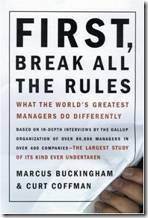Why do things go wrong? Is it inevitable? To some degree it is, but I think the likelihood, frequency, severity and impact of adverse events can be minimized by several key practices, one of which is planning ahead.
What if you only bothered to look a short distance ahead, say 10 or even 100 feet, while driving your car? Possible ramifications:
- You might be afraid to drive fast, thus it would take you a long time to reach your destination, and all other drivers would get there long before you.
- You might decide to drive fast anyway, but would likely crash into something very soon because you will not be able to react in time.
- You might end up on the wrong road, fail to make a turn, or miss some critical information because much visual information on signs and elsewhere is beyond where you are looking.
Well that was a silly example, but how far ahead do most of us look while we are doing our jobs? There are so many things that can be handled easily today that will become really big and nasty problems – maybe even fatal – if they are put off until “later” or not even considered at all.
So why do we fail to plan ahead so often? The excuses I hear most often are something like: “I’m so busy dealing with all of today’s problems that I don’t have time to think about anything else,” or “If we don’t make it through today, there won’t even be a future to worry about, so I can’t afford any time now.” But people who never make the time to look down the road and start doing work that prepares for the future will be doomed to live in a reactive, fire-fighting world forever.
We live in such a fast-paced culture that it has become strangely unfashionable for most people to be prepared in advance – it’s almost as though taking the time to prepare in advance is evidence that you don’t have enough other work to do. Or it could be laziness.
Our ad-hoc culture is well illustrated by an incident that I witnessed some time ago, in which a person was scheduled to present via Live Meeting to a large internal audience at my company. The presenter joined the meeting 2 minutes late, then kept 115 people (!) waiting for 15 minutes while he fumbled around trying to get his Live Meeting setup working. Now imagine if this one person had planned ahead by anticipating possible problems with Live Meeting and getting it set up in advance – it would have taken 15 minutes of one person’s time instead of 15 minutes of time for each of 116 people.
On a much larger scale, I believe that a lot of the trouble we have on our big projects in development, implementations and upgrades could be reduced or even eliminated by sufficient planning ahead. Even though each project is unique, each instance of the same type of project is substantially similar to its predecessors, and thus we should have to start the learning process from scratch with each one.
Research into traffic safety has found that the safest drivers are those who look furthest down the road, which enables them to develop and maintain the situational awareness necessary for efficient driving and accident avoidance. I think a similar principle applies in technology – or almost any other human endeavor. This is expressed in a number of old sayings which might seem trite today but nevertheless reflects long-standing underlying truths in the human experience:
- “A stitch in time saves nine.”
- “A penny of prevention saves a pound of cure.”
- … and I’m sure there are others.
I’ll leave you with one final thought: Those who consistently fail to plan ahead will consistently have problems.
Next time I will explore some of the other reasons for “Why Things Go Wrong.”



